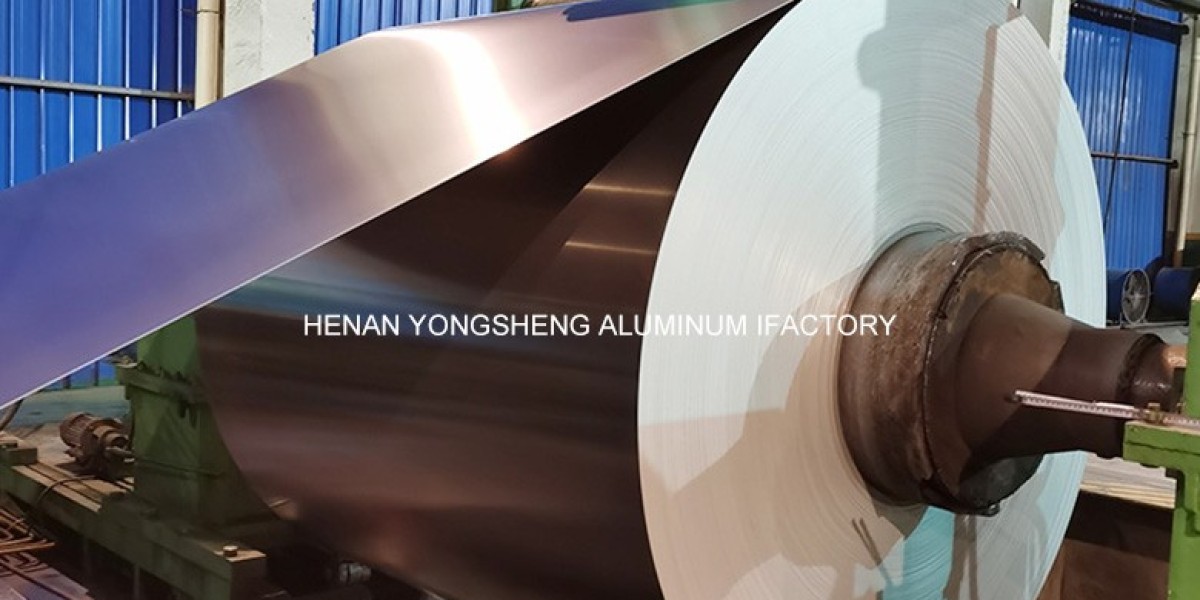So far, China is still the largest exporter of aluminum in the world. Among the main export destinations, the United States, Japan, South Korea, and Australia are the most traditional trading partners. The export of Yongsheng aluminum coils is not only for the above traditional trading partners, but also involves Singapore, Germany, Canada, the United Kingdom, Saudi Arabia, Ukraine, Spain, Poland and so on.
The industry predicts that in 2023, driven by the economic resilience of the United States, India, ASEAN and other countries and regions, the aluminum supply gap that is already in a tight balance will further expand, driving up prices, and will become the best-performing asset class . The most commonly used aluminum alloys around the world include: 6063 aluminum alloy, 6061 aluminum alloy , 5052 aluminum alloy and 3003 aluminum alloy. This article will focus on the production, performance, advantages and applications of 3003 aluminum coils, and help you understand 3003 aluminum coils as soon as possible.
Line Of Production:
The production process of aluminum coils involves several steps:
Melting: Primary aluminum is melted in a casting furnace, and the molten aluminum is cast into ingots, which are then rolled into thin sheets of the desired thickness.
Hot rolling: Homogeneous aluminum is hot rolled to reduce its thickness and increase its length. Hot rolling is performed at high temperatures, usually above the recrystallization temperature of aluminum, to obtain the desired mechanical properties and shape. The aluminum passes through a series of rolling mills where the thickness is gradually reduced to the required specifications.
Cold Rolling: After hot rolling, aluminum coils can be cold rolled to further refine their thickness and surface finish. Cold rolling is carried out at room temperature, and the aluminum coil passes through a series of rolling mills to reduce its thickness while improving its dimensional accuracy and surface quality.
Annealing: Cold rolled aluminum coils may undergo an annealing process to relieve internal stress and improve their formability. Annealing is the heating of aluminum coils to a specific temperature, followed by gradual cooling. This process helps soften the material and enhance its mechanical properties.
Finishing: Following the annealing process, aluminum coils may undergo various finishing operations such as trimming the edges, cutting to size, surface cleaning or applying a protective coating. These steps are performed to meet specific customer requirements or downstream manufacturing processes.
Coiling: The final step is to roll the aluminum strip into large rolls for easy handling, transport and storage. Coiled aluminum coils are typically packaged and ready to be shipped to customers or further processing facilities.
Properties Of 3003 Aluminum Coil
From the perspective of mechanical properties, 3003 aluminum coils have a medium tensile strength of 120 to 160 MPa, which allows them to withstand considerable stress without deformation. In addition, 3003 aluminum coil has a high elongation rate of about 25-35%, which means that it can be easily bent, formed and formed without cracking or breaking.
From the perspective of physical properties, the density of 3003 aluminum coil is relatively low, about 2.73 grams per cubic centimeter. The aluminum coil has a high thermal conductivity, typically around 167 W/m-K at room temperature, so it is also used in electronic applications such as radiators and heat exchangers. Its conductivity is typically around 40% of the International Annealed Copper Standard (IACS) at room temperature. This means it conducts electricity efficiently, making it suitable for use in electrical applications such as wires, conductors and electrical contacts.
From the perspective of chemical properties, 3003 aluminum coils are mainly composed of aluminum, generally more than 98%, and also contain a small amount of additional elements. The main alloying element is manganese (Mn), accounting for about 1-1.5% of the composition. Other trace elements include copper (Cu) and iron (Fe), usually at less than 0.7% each. Exhibits excellent corrosion resistance and lightweight properties. The surface of 3003 aluminum coil can also be treated by various methods such as anodizing, painting or coating, which can enhance its appearance and provide corrosion protection.
Formability Of 3003 Aluminum Coil
3003 aluminum coil is known for its excellent forming and bending properties. It belongs to the 3xxx series of aluminum alloys, is not heat treatable, and has a manganese content of about 1-1.5%. The bending ability of 3003 aluminum coil is described in detail below:
3003 aluminum coil has good formability, making it suitable for a variety of applications requiring bending and forming. It can be easily formed into a variety of shapes including cylinders, cones, curves and complex designs. Additionally, 3003 alloy has moderate strength, allowing it to withstand the stresses associated with bending without cracking or fracturing. But be aware that excessive bending or too small a radius may cause deformation or cracking of the surface.
The minimum bend radius for 3003 aluminum coil depends on a number of factors including the thickness of the material, tempering conditions, and the type of bending process used. As a general guideline, the minimum recommended bend radius for 3003 aluminum is usually equal to or greater than the thickness of the material. For example, if you have a 0.040" (1mm) thick 3003 coil, the minimum bend radius is usually about 0.040" (1mm) or slightly larger. There are various bending methods for 3003 aluminum coil, including air bending, edge bending, embossing and rotary stretch bending. The choice of method depends on the specific application, part design and available equipment. Proper bending techniques and tools must be used to ensure precise bends and avoid damage to the material.
Advantages Of 3003 Aluminum Coil
3003 aluminum coil is a versatile choice for a variety of applications, offering several benefits. First, 3003 aluminum is a non-heat-treatable alloy with excellent corrosion resistance, making it suitable for a variety of applications in corrosive environments. It can also be easily shaped and bent without compromising its structural integrity. Additionally, 3003 aluminum has medium strength and high weldability, allowing for an efficient manufacturing process. The alloy also has high thermal conductivity, making it ideal for heat dissipation applications. Compared with other alloys, 3003 aluminum coil has an economical cost, making it an ideal choice for many industries.
Applications Of 3003 Aluminum Coil
Heat exchanger:
The heat transfer characteristics of 3003 aluminum coil make it suitable for the manufacture of heat exchangers. These coils allow for rapid and even heat dissipation, which promotes efficient heat exchange between fluids. Industries such as HVAC (heating, ventilation, and air conditioning) and refrigeration make extensive use of these coils for their heat transfer requirements.
Packaging:
3003 aluminum coils are widely used in the packaging industry. Their malleability allows them to be easily formed into different shapes and sizes, making them suitable for making containers, cans and lids. In addition, the rolls have excellent barrier properties, protecting the contents from moisture, light and other external factors that can affect product quality and shelf life.
Electrical conductor:
3003 aluminum coil has good electrical conductivity and is suitable for making electrical conductors and power battery casings. These coils are used in power lines, bus bars, and other electrical components that need to conduct electricity efficiently. The high electrical conductivity of 3003 aluminum minimizes energy loss during transmission.







